Abstract
The first dorsal interosseus muscle of the hand was trained for 8 weeks using eighty maximal 10 s voluntary isometric contractions per day. As a result of this training the maximal voluntary force increased by 33%, but electrically evoked tetanic tension increased by only 11%. In other subjects the muscle was trained using electrical stimulation at 60 Hz to evoke eighty maximal 10 s tetani per day for 8 weeks. This training produced no increase in maximum voluntary force. Our results show that the increase in maximal voluntary force under these conditions may be due to a change in the voluntary neural drive to the muscle.
Full text
PDF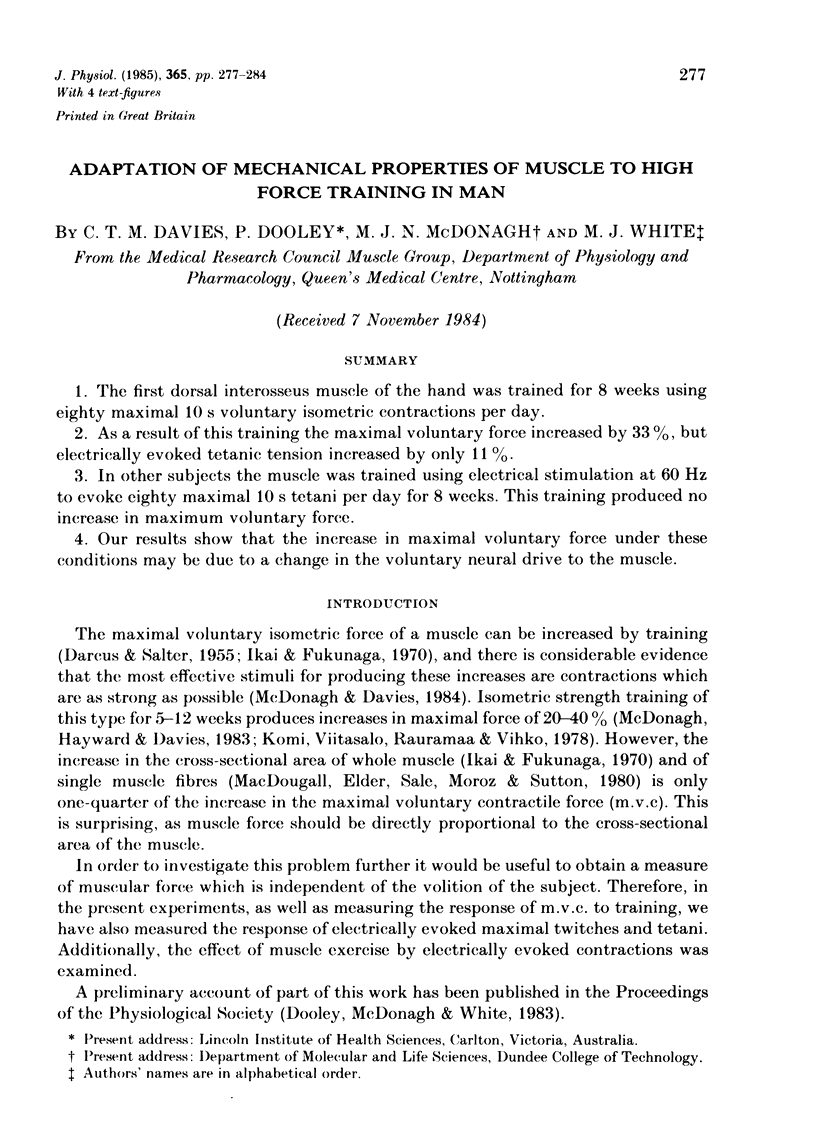
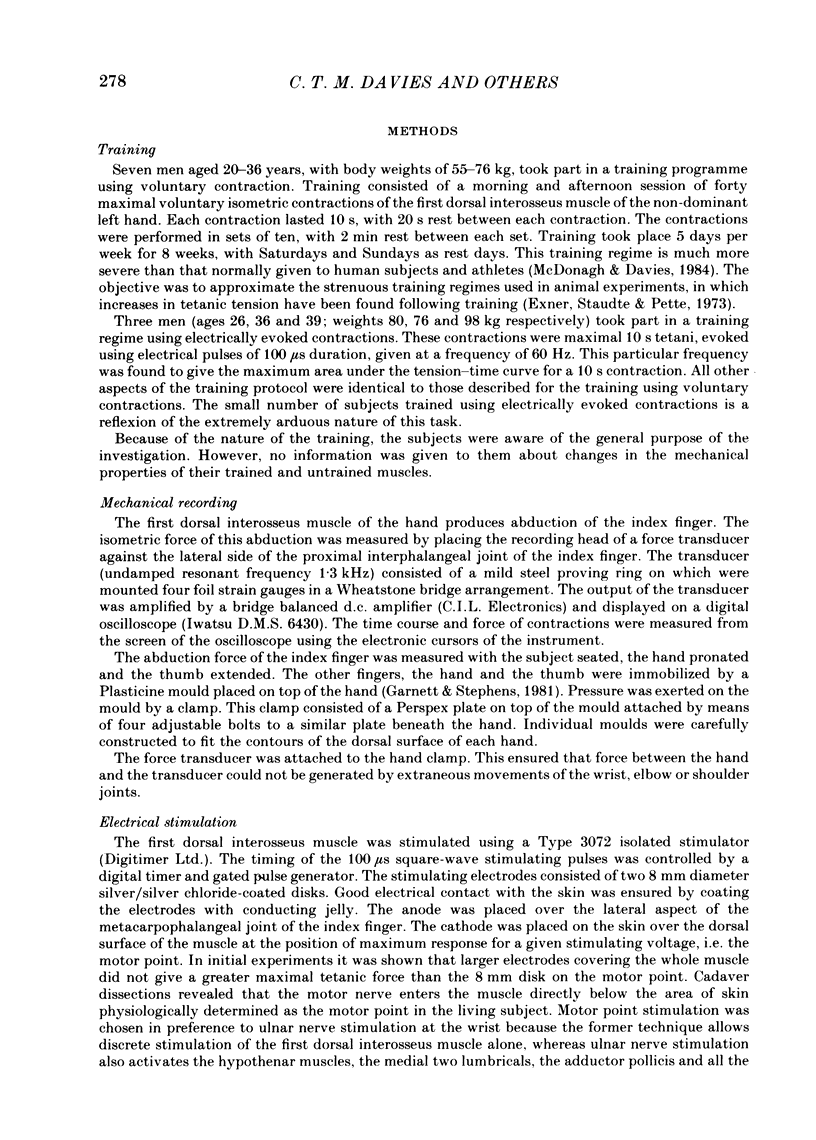
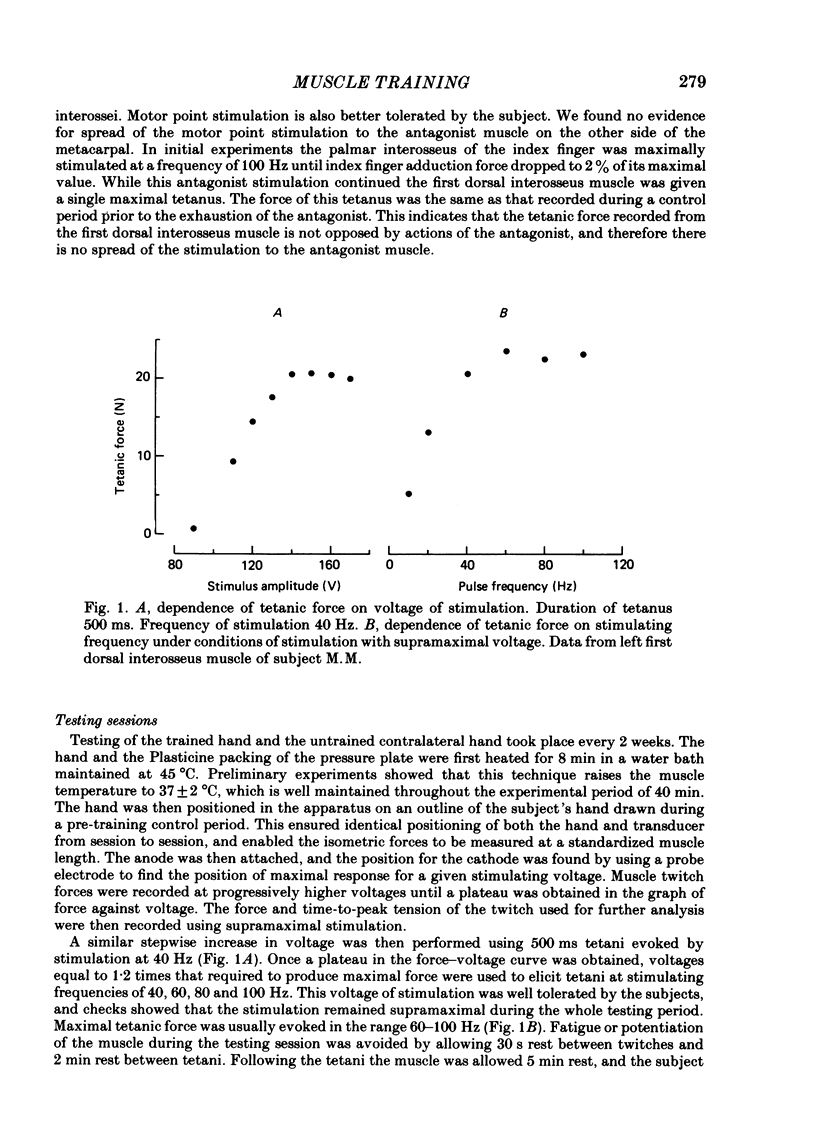
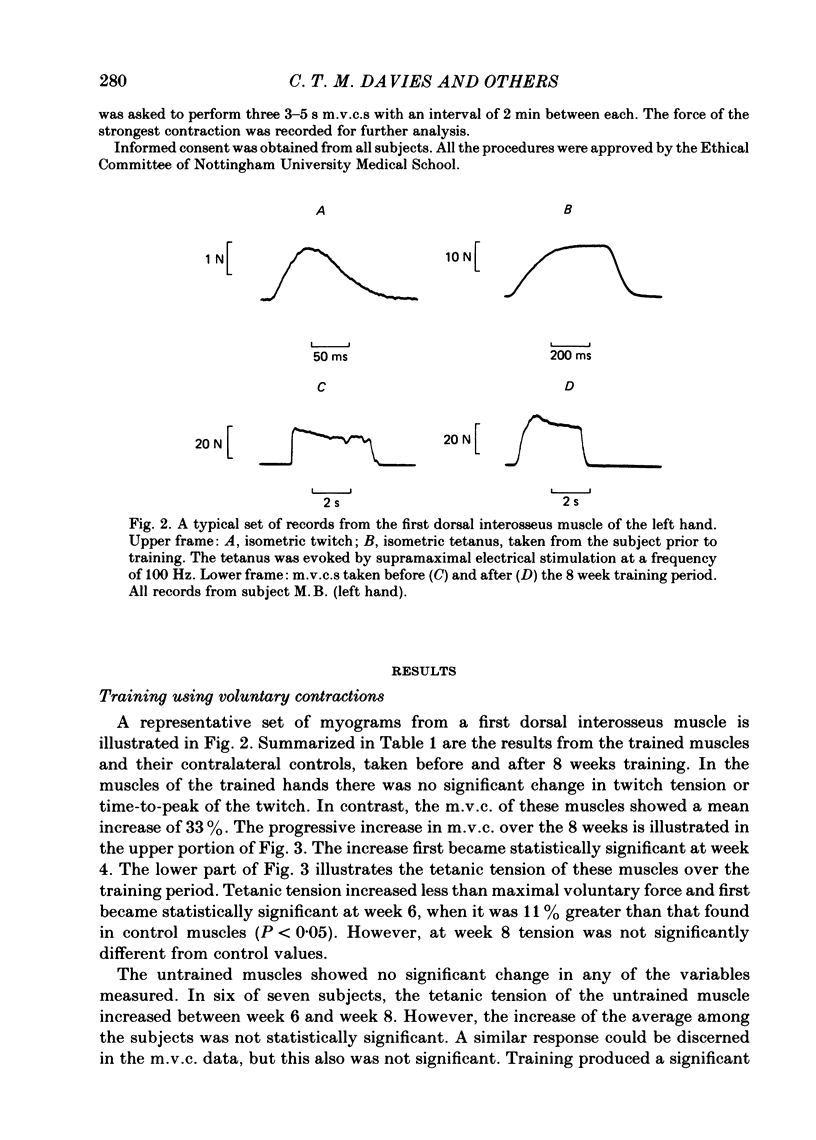
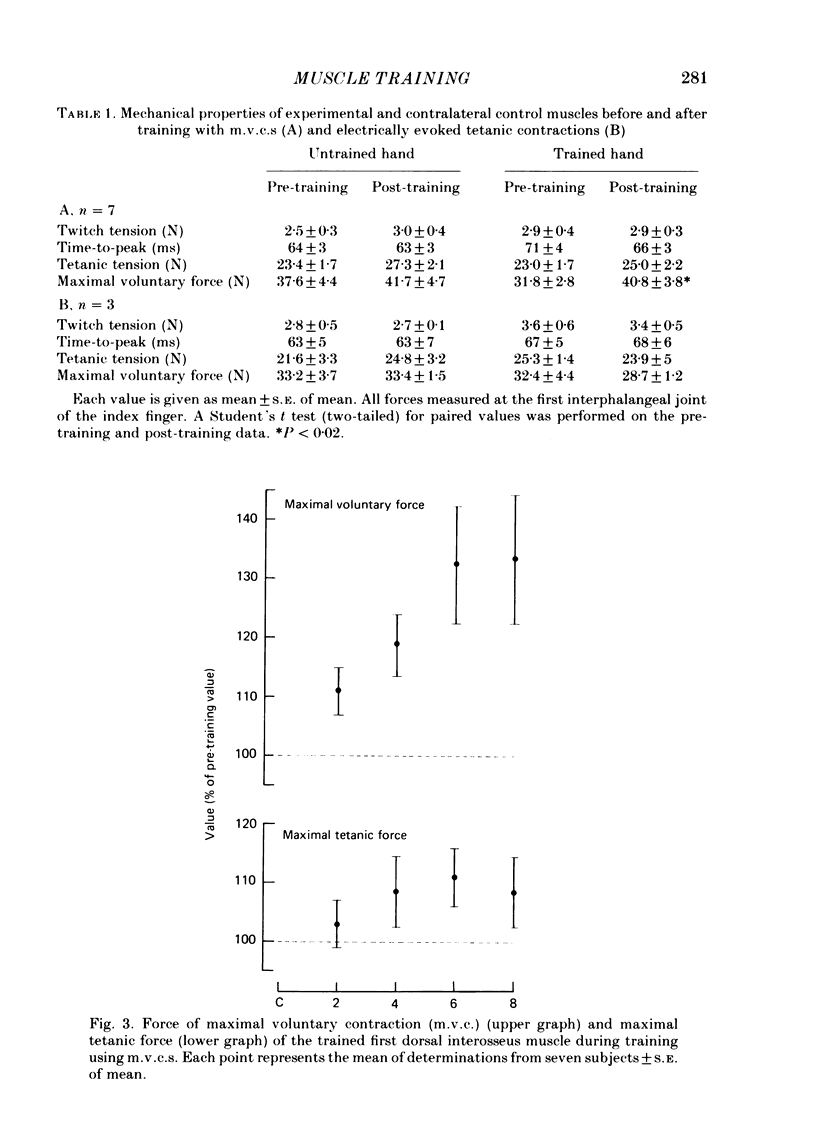
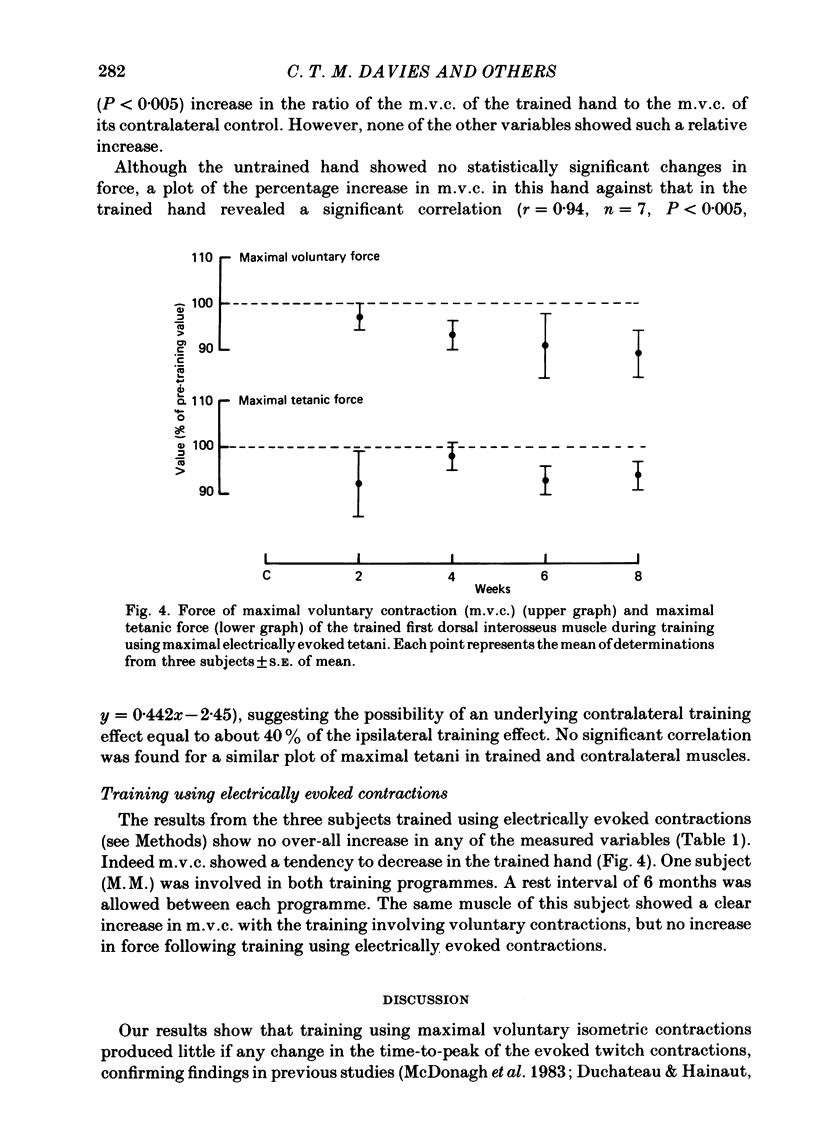
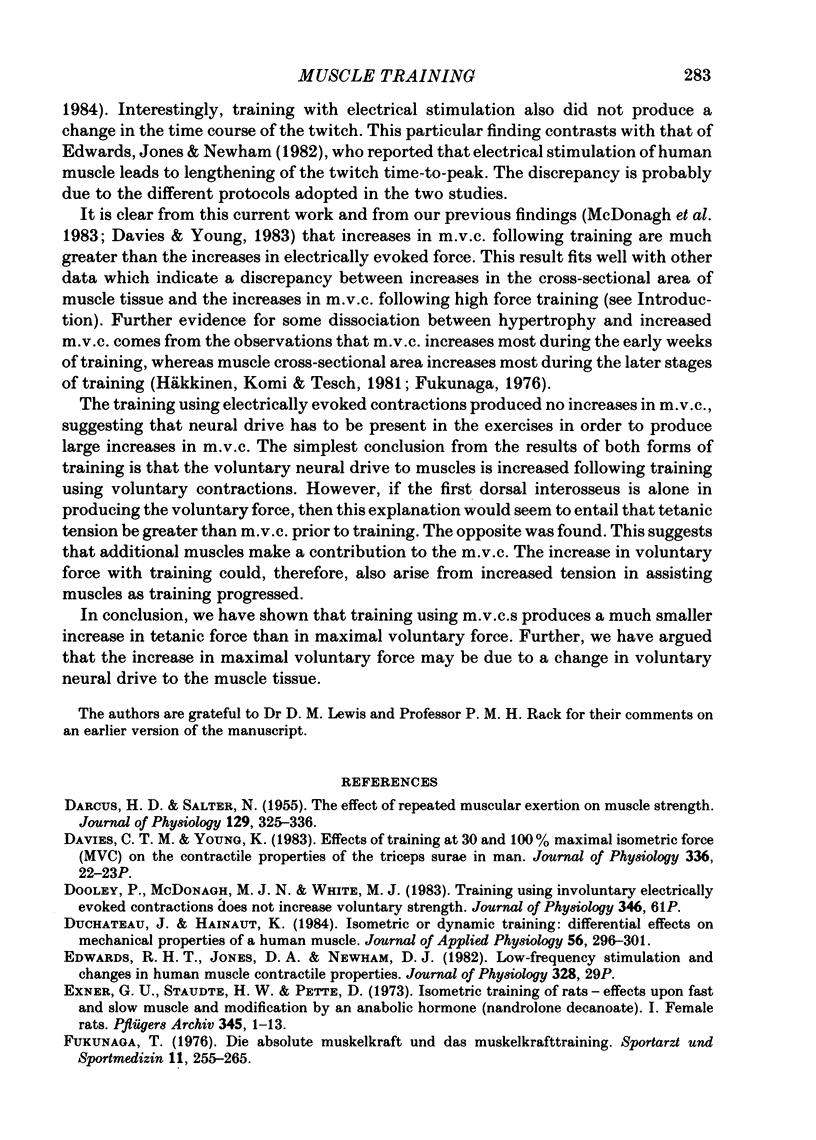
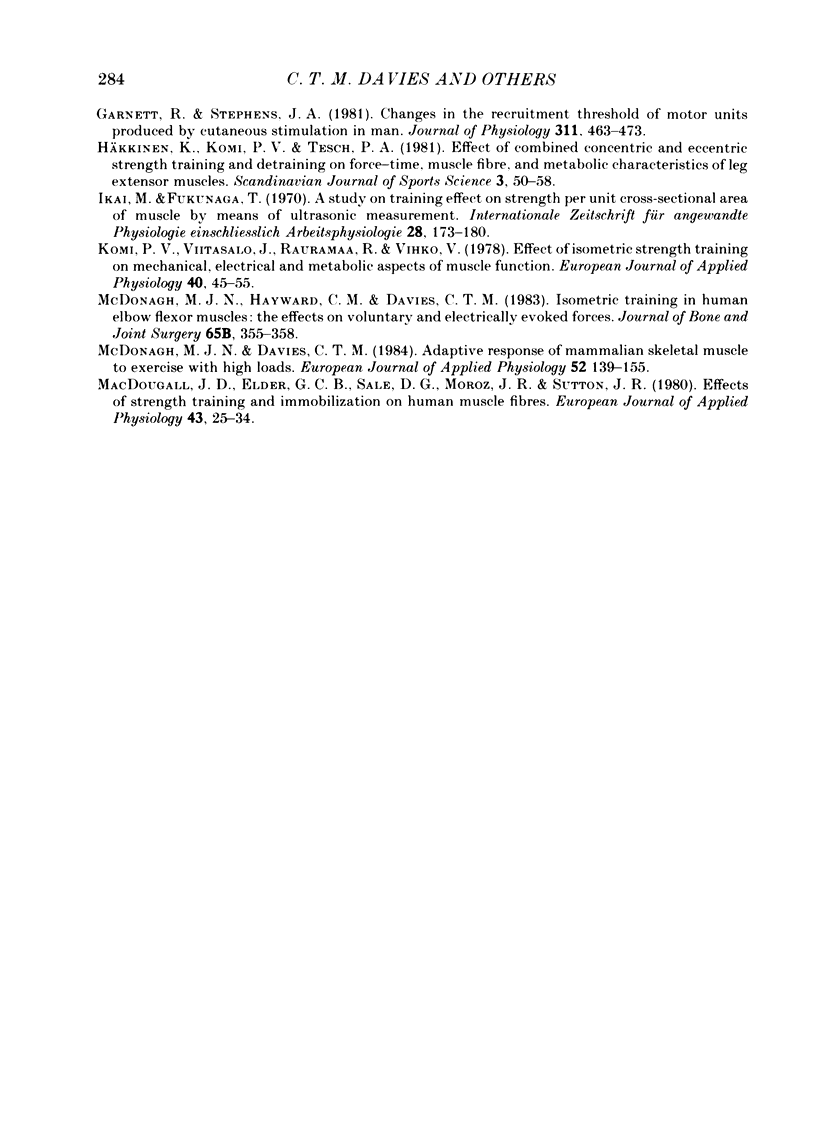
Selected References
These references are in PubMed. This may not be the complete list of references from this article.
- DARCUS H. D., SALTER N. The effect of repeated muscular exertion on muscle strength. J Physiol. 1955 Aug 29;129(2):325–336. doi: 10.1113/jphysiol.1955.sp005357. [DOI] [PMC free article] [PubMed] [Google Scholar]
- Duchateau J., Hainaut K. Isometric or dynamic training: differential effects on mechanical properties of a human muscle. J Appl Physiol Respir Environ Exerc Physiol. 1984 Feb;56(2):296–301. doi: 10.1152/jappl.1984.56.2.296. [DOI] [PubMed] [Google Scholar]
- Exner G. U., Staudte H. W., Pette D. Isometric training of rats--effects upon fast and slow muscle and modification by an anabolic hormone (nandrolone decanoate). I. Female rats. Pflugers Arch. 1973 Dec 7;345(1):1–14. doi: 10.1007/BF00587057. [DOI] [PubMed] [Google Scholar]
- Garnett R., Stephens J. A. Changes in the recruitment threshold of motor units produced by cutaneous stimulation in man. J Physiol. 1981 Feb;311:463–473. doi: 10.1113/jphysiol.1981.sp013598. [DOI] [PMC free article] [PubMed] [Google Scholar]
- Ikai M., Fukunaga T. A study on training effect on strength per unit cross-sectional area of muscle by means of ultrasonic measurement. Int Z Angew Physiol. 1970;28(3):173–180. doi: 10.1007/BF00696025. [DOI] [PubMed] [Google Scholar]
- Komi P. V., Viitasalo J. T., Rauramaa R., Vihko V. Effect of isometric strength training of mechanical, electrical, and metabolic aspects of muscle function. Eur J Appl Physiol Occup Physiol. 1978 Dec 15;40(1):45–55. doi: 10.1007/BF00420988. [DOI] [PubMed] [Google Scholar]
- MacDougall J. D., Elder G. C., Sale D. G., Moroz J. R., Sutton J. R. Effects of strength training and immobilization on human muscle fibres. Eur J Appl Physiol Occup Physiol. 1980 Feb;43(1):25–34. doi: 10.1007/BF00421352. [DOI] [PubMed] [Google Scholar]
- McDonagh M. J., Davies C. T. Adaptive response of mammalian skeletal muscle to exercise with high loads. Eur J Appl Physiol Occup Physiol. 1984;52(2):139–155. doi: 10.1007/BF00433384. [DOI] [PubMed] [Google Scholar]
- McDonagh M. J., Hayward C. M., Davies C. T. Isometric training in human elbow flexor muscles. The effects on voluntary and electrically evoked forces. J Bone Joint Surg Br. 1983 May;65(3):355–358. doi: 10.1302/0301-620X.65B3.6841411. [DOI] [PubMed] [Google Scholar]


